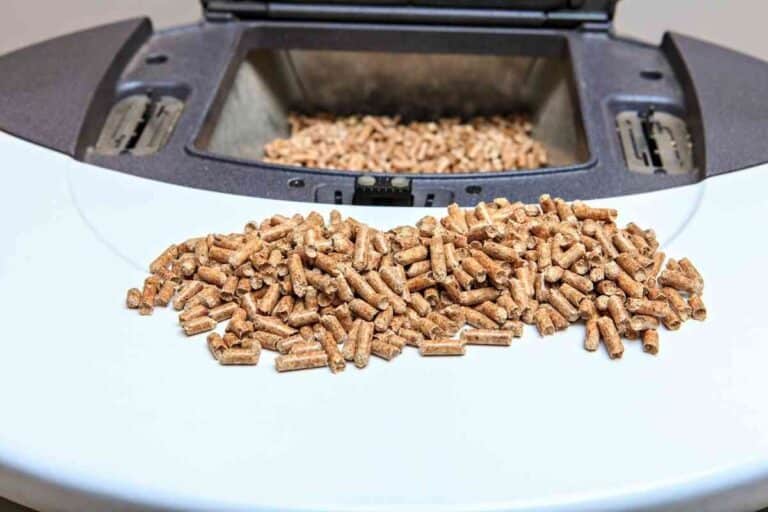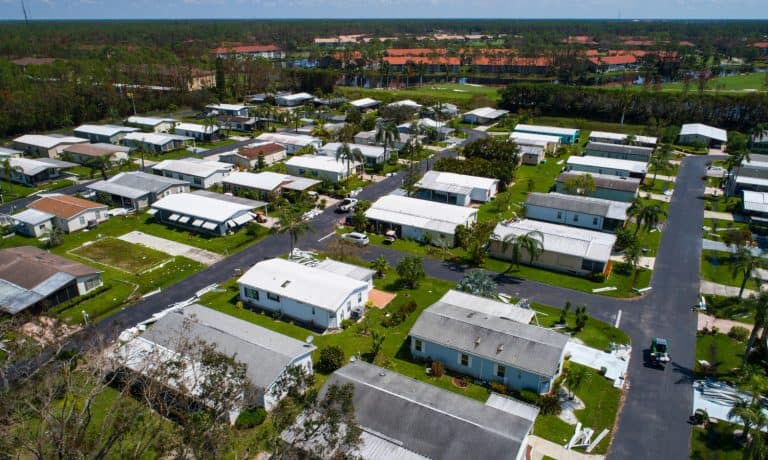How Many Tiny Houses Can You Put On an Acre (Answered!)
Tiny houses are becoming more common as people choose to minimize their residential space for a variety of reasons.
Some choose tiny homes for their portability, attaching them to a vehicle for traveling.
Others choose them for the lower financial costs, minimizing property taxes and mortgage payments.
Others choose them for environmental reasons, using less land, energy, and resources than conventional homes.
Many choose them for a combination of reasons.
The primary attribute of tiny homes is that they are small
They utilize creative designs to take up little space while still having many of the comforts of a normal-sized home.
This allows them to be placed in a flexible range of environments.
You may be wondering how many tiny houses can you put on an acre?
How Many Tiny Houses Can You Put On an Acre?
Every state and locality has different laws regarding tiny homes, but even the most generous states usually define the number of houses allowed in a lot and the space required between houses. The maximum number of tiny houses that you can out on one acre is about 15.
This would allow each tiny house to be placed on the land in a way that fits within generous regulations.
Here we will discuss the factors involved in reaching this number.
Defining a Tiny House
There is not exactly a set definition for a tiny house.
A quickly growing phenomenon, tiny houses are much more compact than standard houses.
They do not have strict or universal square foot measurement requirements.
Instead, the square footage required varies by location.
This means that the maximum number of tiny houses you can put on an acre of land can vary depending on the size of each house.
In general, however, tiny houses are under 600 square feet.
According to a 2021 study of tiny homes by porch.com, the average size of a tiny house for sale in the United States is only 225 square feet.
So when asking “how many tiny houses can you put on an acre?” you have to consider the size of each tiny house.
Tiny houses come in a variety of shapes and sizes, making the space needed for each different.
Other factors to consider for quantifying the number of tiny houses you can put on an acre are local laws, the distance between each tiny house, and obviously, the size of an acre.

Size and Zoning Requirements By Location
Each state in the United States has different requirements for tiny homes
Some are more generous than others with the size requirements and how many tiny homes are allowed on a lot.
Within states, local laws also factor in.
You will want to be sure to check the local laws of the area you plan on having tiny homes in.
For instance, Maine is ranked very highly for tiny home access.
It has statewide guidelines for building tiny homes, defining them as being less than 400 square feet.
This makes Maine an ideal state to maximize the number of tiny houses on a plot of land.
The other equally high-ranking state on the list is Texas.
One town in Texas, Breckenridge, requires tiny houses to be a minimum of 320 square feet.
Because of Texas’ overall legal acceptance of tiny homes and plentiful land, this would also be an excellent state to maximize the number of tiny houses in an acre.
Connecticut is a state that ranks much lower for favorable tiny house regulations.
Ranked last on the list, the state’s housing regulations are stricter than virtually all other states.
There are no statewide regulations like in Texas and Maine that are beneficial to tiny houses.
Instead, the regulations make living in a tiny house quite difficult legally.
Different states have different laws regarding the size needed to qualify for a house.
Some states have laws that make tiny houses essentially not allowed to be called houses.
As stated earlier, local laws play into this factoring heavily.
Just because a state ranks high on that list overall, does not mean every town or city will allow for a large number of tiny homes on one acre.
Distance Between Tiny Houses
When placing a group of tiny houses together, a major factor involved is how to utilize the space around them.
Many tiny houses have small yards or patios.
A front and a backyard add to the space needed for each house.
Most tiny houses also need space for parking.
Especially those that are not permanent and travel with a vehicle.
Unless you are simply storing tiny houses tightly packed next to each other with no one living in them, these are things to consider.
You need the living space of each tiny house to be practical after all.
This also ties into the above-mentioned local laws.
Some laws require a certain amount of space between each tiny home.
Some require a certain distance between houses and the street.
Many localities have rules that describe how many homes can be placed on one lot in general, tiny houses or not.
The Size of An Acre
An acre is equal to 43,560 square feet.
To maximize the number of tiny houses that you can physically put in one acre, you can take the average size of a tiny home and its needed space divided by that number.
So, if the average tiny house is 225 square feet and each house needs a 10-foot buffer on each side, that is 265 square feet for each tiny house.
Dividing the acre square footage by the size needed for each house, you get 164 tiny houses that could fit in an acre.
That is a lot of tiny houses packed together! However, this number is unrealistic.
Legally, there may not even be any areas that would allow this for anything other than tiny house storage.
Livability-wise, you have to take all the factors mentioned earlier into account.
The Verdict
As mentioned earlier, every state and locality has different laws and regulations regarding tiny homes.
They usually specify a minimum and/or maximum square footage to qualify as a tiny home.
They also generally define the number of houses allowed in a lot and the space required between houses.
The maximum number of tiny houses that you can out on one acre is about 15.
This would allow each tiny house to be placed on the land in a way that fits within generous regulations.
Even the states with the most generous tiny home regulations would likely not allow a single acre to become overcrowded with so many tiny houses.
So, based on all the factors listed above, the maximum number of tiny houses that you can out on one acre is about 15.
This would allow each tiny house to be placed on the land in a way that fits within generous regulations.
However, if each home had more realistic property attributes, the number would fall closer to 10.
These attributes include amenities, space for parking, significant space between houses, etc.
Comparing this number to a study done by The National Association of Home Builders, which places the maximum amount of conventional houses on one acre at five, you can see the difference in space needed for tiny houses opposed to conventional ones.
Tiny houses are quickly becoming a popular choice among those attempting to minimize their residential space.
The fact that you can potentially fit 15 of them on one acre shows how little land they need.






